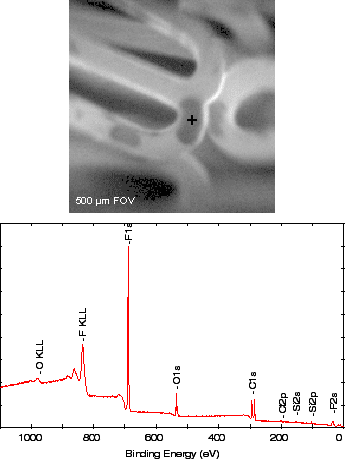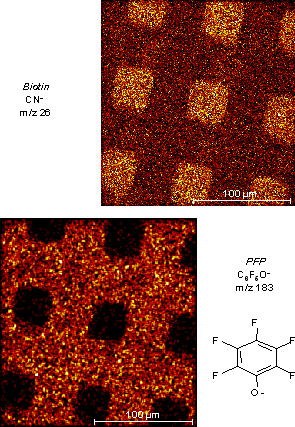Biomedical
2015.03.31 Update
Biomedical
The ability to study metal and polymer surface chemistry and correlate it with biocompatibility is a routine application of PHI surface analysis instruments. An emerging biomedical application is the study of proteins and other organic materials for the development of biosensor technology and studying mechanisms to promote cell growth.
Surface characterization (XPS, TOF-SIMS, AES)
Surface composition is critical to biomedical device performance. XPS surface analysis provides quantitative chemical state information that can be used to evaluate and monitor surface composition. TOF-SIMS surface analysis provides molecular structure information and trace element detection that is not available via XPS. AES surface analysis provides high spatial resolution surface characterization with elemental and limited chemical state information.

Fig. 1: An x-ray beam induced secondary electron image indicates the presence of localized contamination on the surface of a coronary stent. XPS spectra from a contaminated area show the presence of a fluorocarbon contaminant.

Fig. 2: TOF-SIMS images of a biological ligand used in the fabrication a biosensor.


